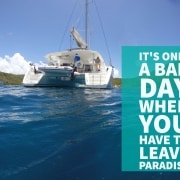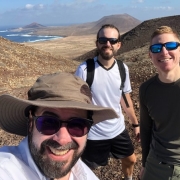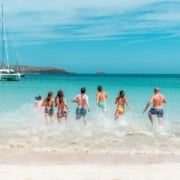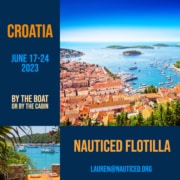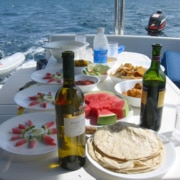Yacht Charter in the Bay of Islands, New Zealand
NauticEd staff just completed a 10-day yacht charter on a 40 ft Leopard Catamaran with the Moorings, New Zealand in the famous Bay of Islands. AND … I have to say that comparing all the places all over the world that we have chartered in, the Bay of Islands is definitely world class. We sailed out of Opua which is the yachting hub. We first ventured 12 nautical miles north out of the Bay to the Cavalli Islands where we stayed the first 2 days. Then further North to Whangaroa harbour, back to Opua, south to Whangamumu, back to the bay for a few nights then returned to the base. As with all bareboat charters the time flew by and 10 days was not enough.

Our Moorings 40 Charter Catamaran in Paradise Bay, Urupukapuka Island
If you like what you see below and are interested in Chartering in New Zealand contact us, we’ll help you book and design a perfect itinerary.
Here’s a quick summary of each location we visited and some of the activities

North Island New Zealand
Zoomed in – here’s an iPad Navionics chart of the area.
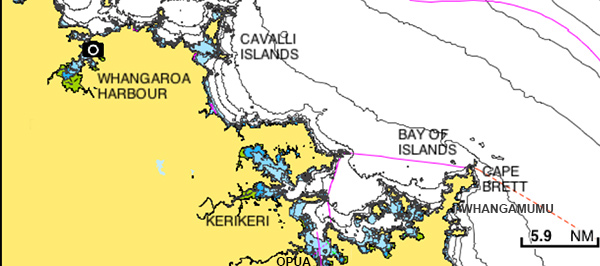
Sailing ground for a Moorings Charter – Whangaroa to Whangamumu.
First off, the Bay of Islands is unquestionably spectacular. There are over 100 islands but about 6 main large ones with dozens of protected anchorages and amazing lonely beaches in the islands and arms off from the mainland.

I love this place
The main larger islands all have local Maori names. From west to east they are: Motuarohia Island, Moturua Island, Motukiekie Island, Okahu Island, Waewaetorea Island and the largest Urupukapuka Island.
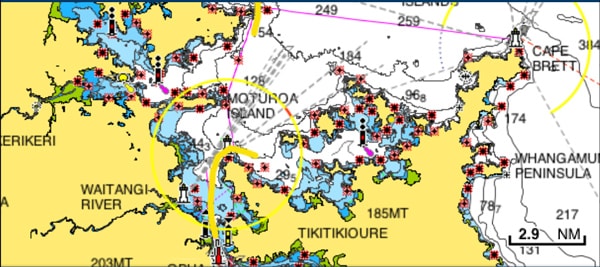
Bay of Islands New Zealand
Twelve miles to the northwest of the 10-mile wide Bay of Islands lie the Cavalli Island group. The Cavallis is the final resting ground of the famous Rainbow Warrior green peace boat bombed in the Auckland Harbour in 1985 by the French government. I’ve dived on the Rainbow Warrior on previous trips to the Cavallis and it is a great wreck dive where there are easy entrances and exits at about 60 feet deep.
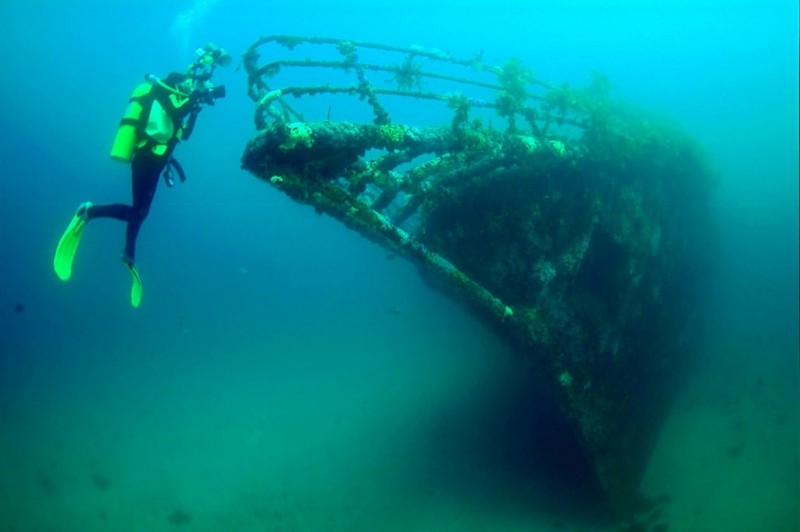
Matauri Bay-Rainbow Warrior
The Cavallis, as with the entire north of New Zealand, are abundant with Snapper and many other kinds of eatable local fish, crayfish (a local spiny lobster) and scallops. Thus we took along with us with us 3 fishing rods and eight scuba tanks and were able to feed the entire boat each night from our catch as we sailed around between the different islands and bays. Contrary to the Caribbean and parts of equatorial Pacific, the reef fish are completely safe to eat. It’s the absolute most seafood we’ve ever prepared on a sailing trip anywhere in the world – purely because of the abundance of fish. We were able to refill the scuba tanks back at Opua when we stopped back mid-week to re-provision. However, there is also a scuba refill station at Matauri Bay campground opposite the Cavallis.
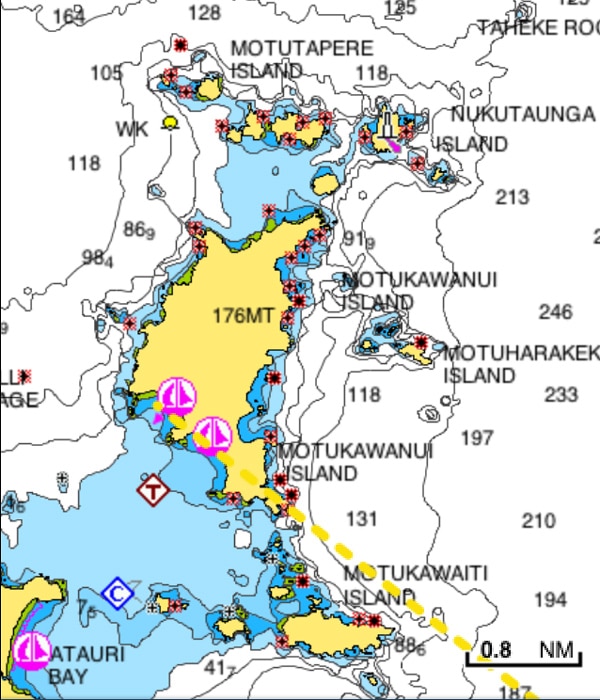
Cavalli Islands New Zealand
And the islands are pretty spectacular. Which is one thing that you’ll notice about New Zealand is the ruggedness of the coastline followed by extremely beautiful untouched and uninhabited beaches.
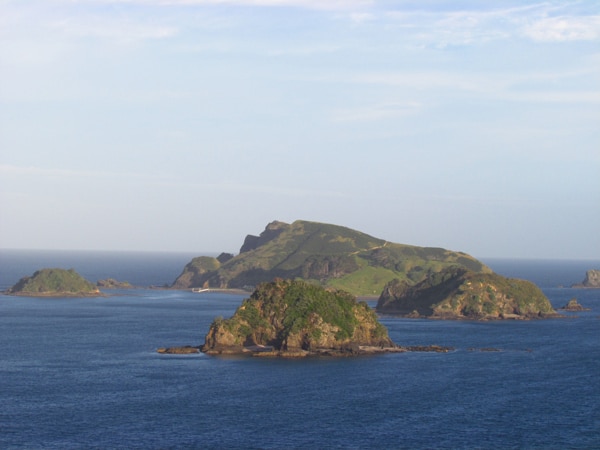
View of the Cavalli Islands
A walk up to the monument commemorating the Rainbow Warrior is really with the walk from Matauri Bay and gives a commanding view of the Cavallis.
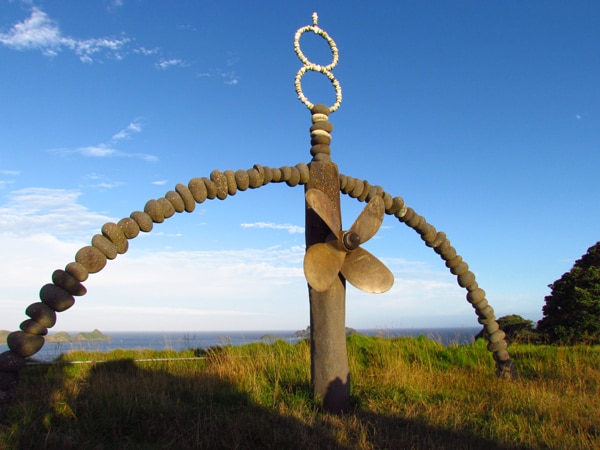
Rainbow Warrior Monument at Matauri Bay
Scuba diving in and around the New Zealand coastline is pretty incredible. The water is too cold for coral but the reefs are still abundant with fish and colour. Scallops are found in sandy areas at about 30 feet deep and beyond. Crayfish are found in the rocks 20 ft down and below. Noting the cold – you’ll need about a 3-5 mil wetsuit to cope with the extended underwater times.
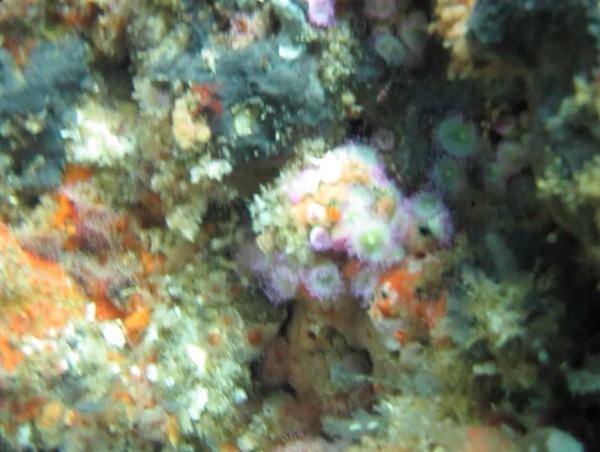
Colourful reefs in New Zealand
On one of the dives for our search for Scallops, I came across one of the weirdest looking things I’ve seen under the water. In the sand lay a perfectly tubular hole about 8 inches in diameter and 4 ft deep. Lining the hole was perfectly placed scallop shells from top to bottom and outside the hole lay a heap of scallop shells. Needless to say, there was something intelligent living in there. Ohhhh – I got the underwater heebie geebies. About 50 meters further on was a large Octopus contently sitting there with his tentacles wrapped around more scallops ahh – mystery solved – pretty cool.
Our scuba adventure also involved catching crayfish which are certainly a delicacy. In the shops, this one would sell for about $150.
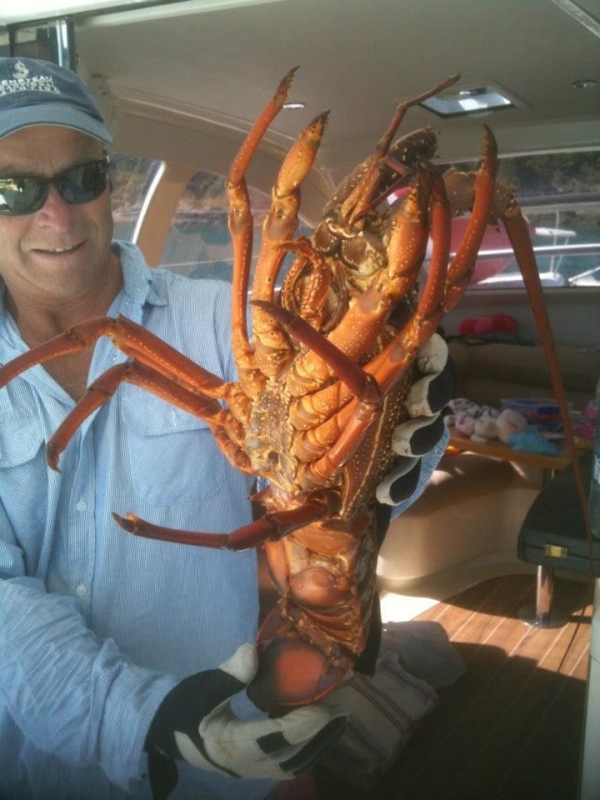
Crayfish
On from the Cavallis, we sailed further north to Whangaroa Harbor.
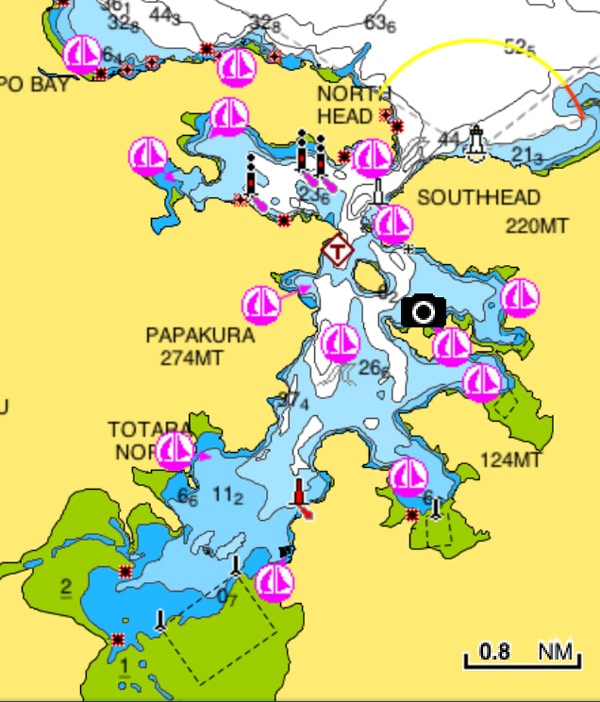
Whangaroa Harbour New Zealand
This is a very large harbour with a narrow entrance and impressive cliffs and ancient volcanic cones. It is thus very sheltered and well worth the visit and sail north from the Cavallis.
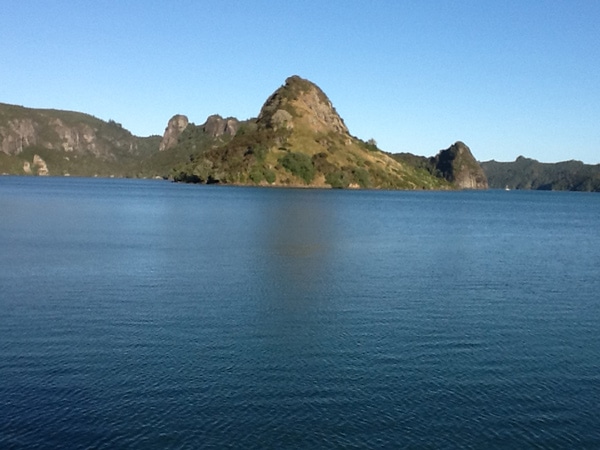
Whangaroa Harbour
Here also is a cool interactive 360 panorama photo I took on my iPad.
A unique chartering aid feature we discovered in Whangaroa harbour was a floating water refill station which operates on the honor system – pay $5 and refill your tanks. Thus throughout the entire charter, we did not need to skimp on water – what luxury.
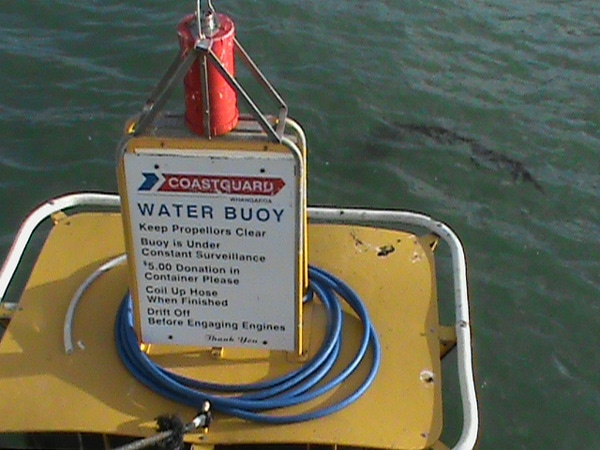
Water Buoy in Whangaroa Harbour
After Whangaroa, we headed south back to the Bay of Islands stopping over again in the Cavallis and just enough time to snag the anchor on the bottom at 25 meters. Fortunately, the scuba gear was readily available and we were able to dive down to retrieve This also creates a great future blog topic on how to retrieve a stuck anchor – without scuba diving. The topic is covered in our skipper course also. In this instance, I believe the method would have worked well considering what we found the anchor to be doing on the bottom – see blog to come on this.
The sail back to the Bay of Islands was in a fairly large swell of about 2m with about 15 knots of wind which made it pretty interesting although the Cat handled the conditions well. Back in Opua we reprovisioned and headed out to Assassination Bay, an extremely tranquil and quiet protected bay – one of dozens of stunning anchorages throughout the Bay. Assassination bay was so named after a group of french were killed in the early development years of New Zealand.
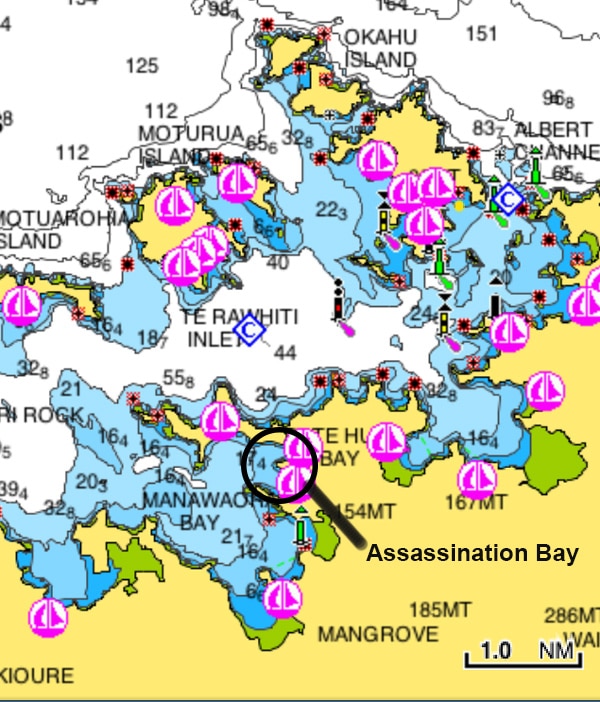
Assassination Bay
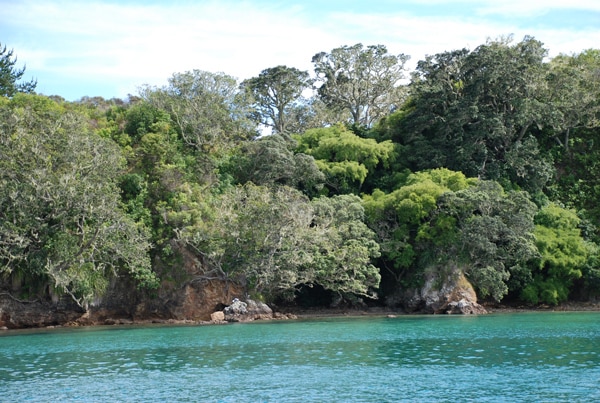
The Beautiful Shoreline in Assassination Bay
Over the next few days, we explored many of the islands throughout the Bay. Of course, exploring meant scuba diving for scallops and snapper fishing. At the south end of Urapukapuka island is a very sheltered and beautiful bay with a white sandy beach.
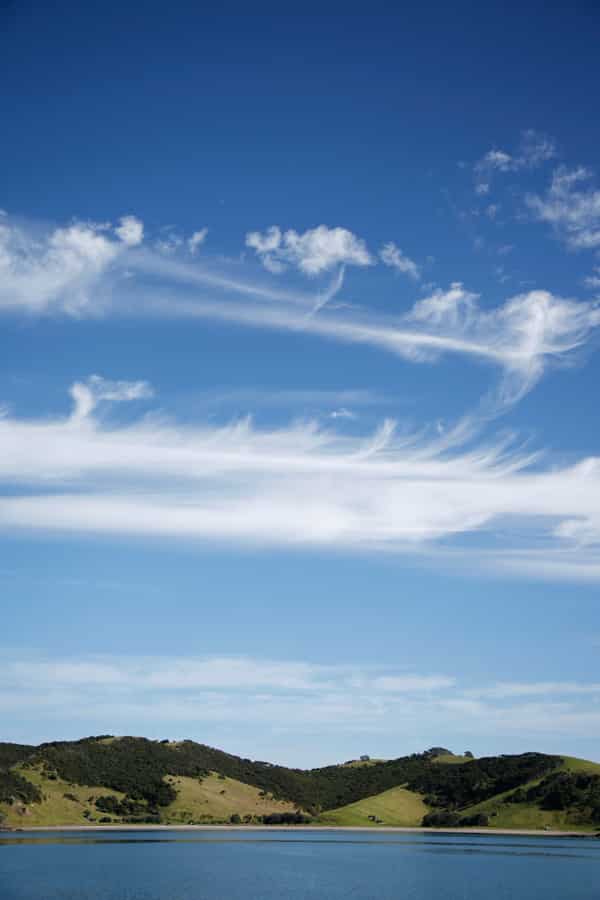
Urupukapuka Bay
The island supports a fantastic worthwhile 1-2 hr walk through native New Zealand forest and leading up to a stunning and commanding view of the entire bay of islands in all directions. Next person up – take your iPad and get a 360 Panorama.
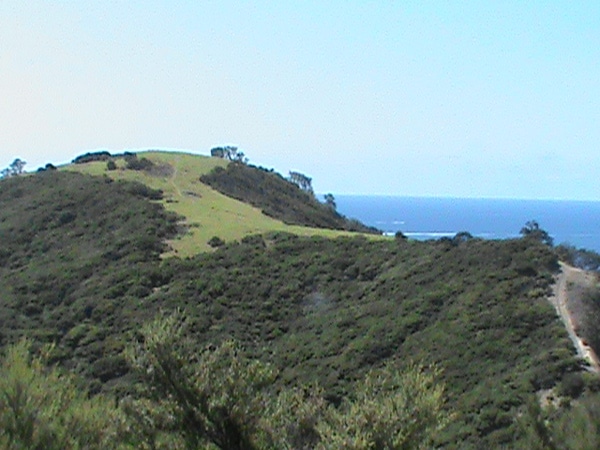
Top of Urupukapuka Island
Heading south out of the Bay of Islands is the famous and large hole in the rock. Thousands of tourists every season travel on laden ferry boats to visit the rock and motor through the hole. Of course we zoomed through in our little dinghy.
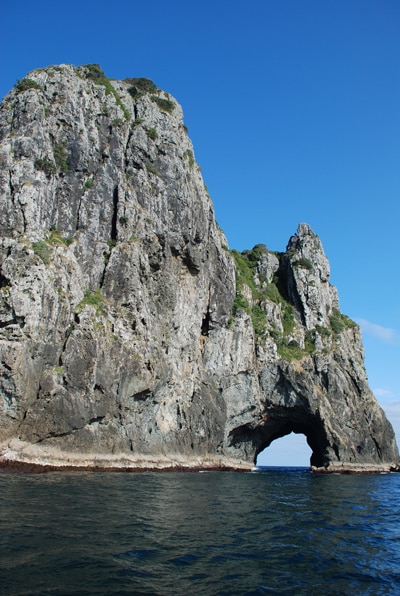
Hole in the Rock at Cape Brett
Further south lies Whangamumu habour which is another extremely sheltered harbour and almost quite round inside.
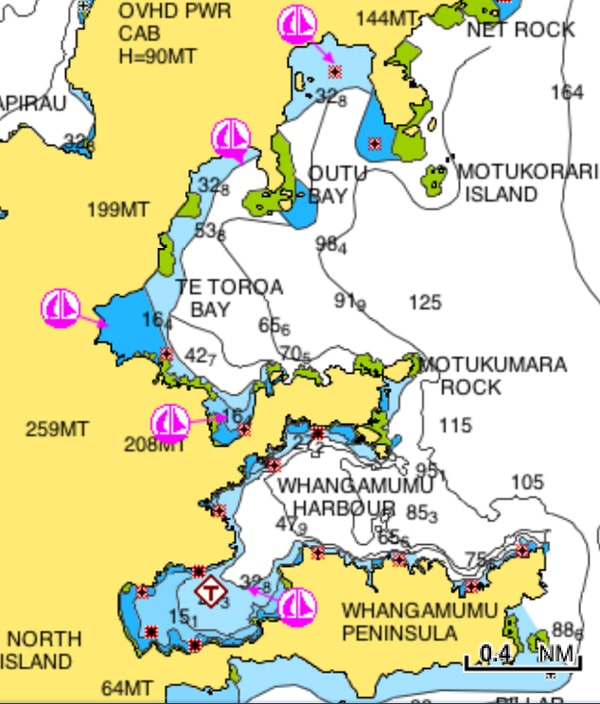
Whangamumu Harbour
The harbour has remnants of an old whaling station now rotting from the 1800s. A very sad place in on sense because of the slaughtered whales of old times – but on the lighter side – the dolphins seemed to be enjoying the harbour. It’s almost a guarantee that you see dolphins on a charter in the Bay of Islands area.
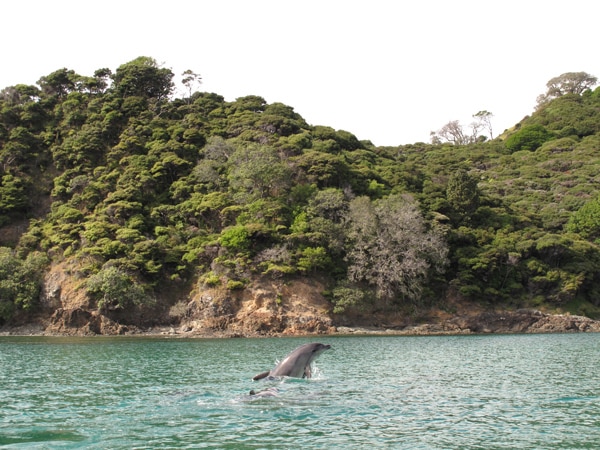
Dolphin playing in Whangamumu Harbour
On almost any blue sky day, Whangamumu is a sight not to be missed, with several walking tracks around to take advantage of.
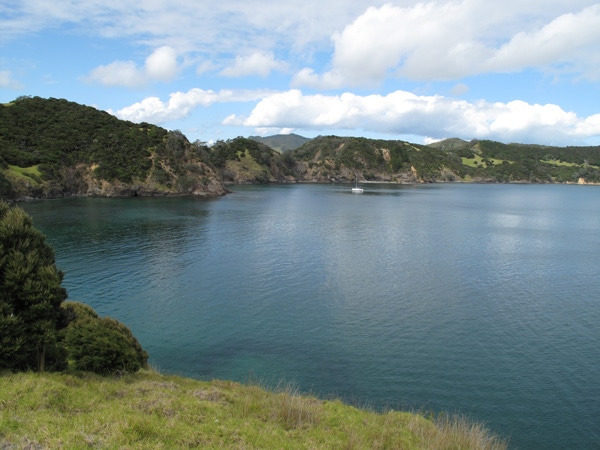
Whangamumu Harbour
And of course I couldn’t help but do a few donuts in the dinghy LOL.
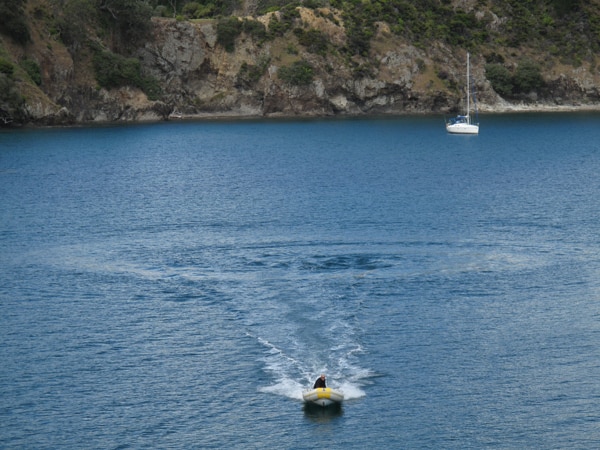
Donuts in the Whangamumu Harbour
We fished and scuba dived amongst the rocks just outside the harbour for Crayfish, scoring an incredible sized packhorse cray (featured in the video) and some decent sized snapper all for dinner – although you’ll see in the video below, I almost lost the Cray overboard.
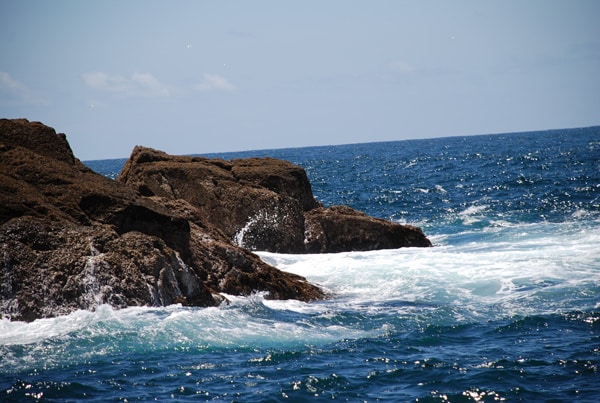
Whangamumu Rocks
The sail from the hole in the rock down to whangamumu harbor is amazing display of the rocky New Zealand coastline including the Cape Brett Lighthouse marking the southern end of the Bay of Islands.
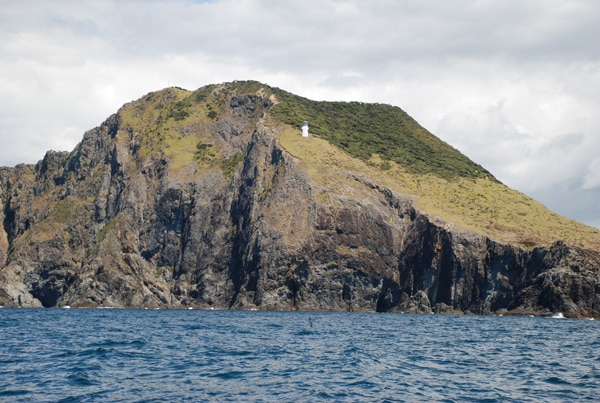
Cape Brett Lighthouse
Our final two nights were spent back in the Bay of islands in Paradise Bay and Urupukapuka Bay on Urapukapuka Island. Paradise Bay has the most beautiful white sandy beach with deep water almost right up to the beach. Great for close in anchoring.
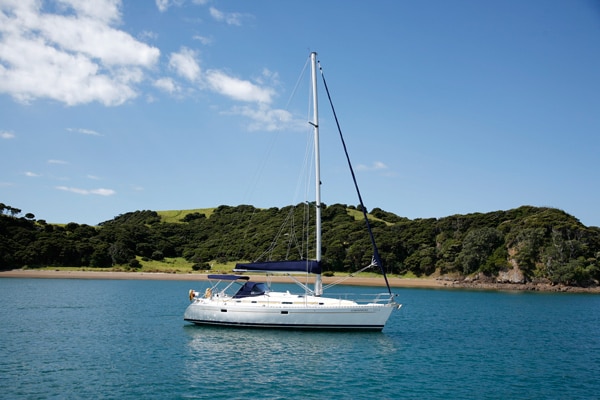
Paradise Bay
Overall, we can’t recommend the Bay of Islands more as a world-class yacht charter location. The staff at the Moorings Base were friendly and helpful and the boat ran without any hitches.
The best time to charter a yacht in New Zealand is anytime from December through March.
If you want to learn more about chartering in The Bay of Islands, New Zealand or make a booking, contact us at NauticEd we’ll help you design a perfect itinerary.
Now, please enjoy watching our video on our experience in New Zealand and why you should consider the NauticEd Bareboat Charter Master bundle of courses. PS Watch the second half for the fun stuff.
If you are visiting New Zealand for an extended amount of time, here are some other things to do in North Island New Zealand
- RYA Day Skipper with NauticEd - April 1, 2024
- NauticEd uses the SailTies GPS Tracking App - March 29, 2024
- Sea of Cortez Flotilla – February 2025 - March 8, 2024

